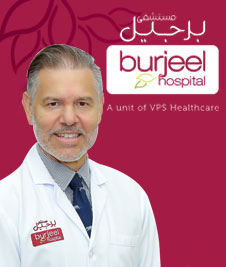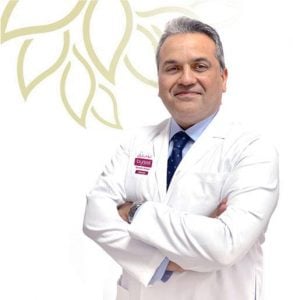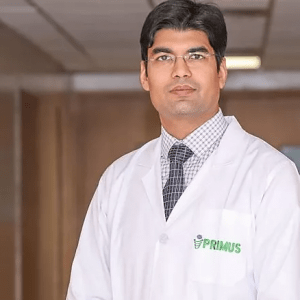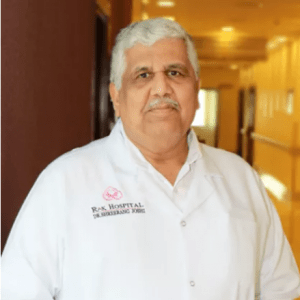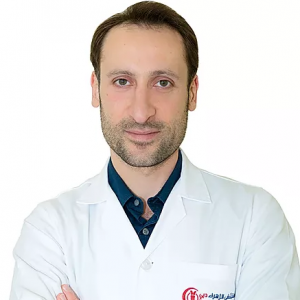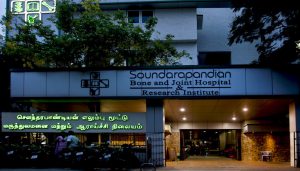Arthroscopic Menisectomy
An arthroscopic meniscectomy is a procedure to remove some or all of a meniscus from the tibio-femoral joint of the knee using arthroscopic (keyhole) surgery. The procedure can be a complete … Read More
Top Doctors For Arthroscopic Menisectomy Treatments
Top Hospitals For Arthroscopic Menisectomy Treatments
Arthroscopic Menisectomy
- Lateral meniscus; which is near the outer edge of the knee joint.
- Medial meniscus; which is near the edge on the inside of the knee.
- In total meniscectomy; the entire meniscus is surgically removed. This may, however, increase the risk of arthritis about 10 years later.
- In partial meniscectomy; only the damaged part is surgically removed. It is usually carried out to preserve as much of the cartilage as possible.
- Age.
- Tear size.
- Tear location.
- Cause of the tear.
- Symptoms displayed.
- Activity level.
Symptoms
• A popping sensation.
• Swelling or stiffness.
• Pain, especially when twisting or rotating your knee.
• Difficulty straightening your knee fully.
• Feeling as though your knee is locked in place when you try to move it.
A meniscectomy procedure is typically performed to treat a torn meniscus. However, a meniscectomy procedure is only needed when;
- A tear does not heal with conservative treatment, like rest or ice.
- The knee joint goes out of alignment.
- The knee becomes locked.
Causes
A torn meniscus occurs because of trauma caused by forceful twisting or hyper-flexing of the knee joint. Symptoms of a torn meniscus include knee pain, swelling, popping, and giving way.
Preparation for an arthroscopic meniscectomy.
The following tips might be taken to consideration when going for an arthroscopic meniscectomy.
- About 2 to 4 weeks before an arthroscopic meniscectomy surgery, it will be helpful to start strengthening exercises; the stronger the muscles around the knee are, the easier and faster recovery will be.
- Have a thorough discussion with the doctor about expectations during and after surgery,
- Make arrangements for transport back home.
- Avoid eating or drinking 8 to 12 hours before an arthroscopic meniscectomy surgery.
Meniscectomy surgery.
There are two main approaches in a meniscectomy surgery;
- Arthroscopic meniscectomy surgery: Carried out under spinal or general anaesthesia, and you can leave for home the same day as the surgery.
- Open meniscectomy surgery: Carried out under a general or spinal anaesthesia, but may possibly require a hospital stay.
Arthroscopic meniscectomy surgery
For this arthroscopic meniscectomy procedure;
- Three small incisions of about 1cm are made around the knee.
- An arthroscope, which is a lighted scope with a camera, is inserted through an incision and the tools used to perform the procedure are inserted through the other incisions.
- All the structures in the knee are examined using the camera.
- When the tear is found, the damaged part (partial meniscectomy) or the entire (total meniscectomy) meniscus is removed.
- The arthroscope and other tools used in performing the surgery are removed.
- The incisions are then closed up with a suture or surgical tape strips.
Open meniscectomy surgery
For this arthroscopic meniscectomy procedure;
- A large incision is made over the knee to expose the entire knee joint.
- The joint is then examined to identify the tear.
- After which the damaged part or the entire meniscus is then removed.
- After the removal, the incision is sewn or stapled.
Aftermath of an arthroscopic meniscectomy surgery.
Aftermath of an arthroscopic meniscectomy procedure requires a hospital stay of about 1 or 2 hours in a recovery room. This is to enable the sedation wear off ad regain consciousness.
As soon as you’re out of the recovery room, you should be able to bear weight on the knee to stand and walk, but might probably need crutches for walking for about a week. There’s also the likelihood of home exercises being recommended to help the knee regain strength and mobility. Sometimes physical therapy may also be required.
How long does it to recover from a meniscectomy procedure?
Depending on the surgical approach used, recovery from a meniscectomy procedure takes about 4 to 6 weeks. Recovery from an arthroscopic meniscectomy surgery is usually shorter than from an open surgery.
Resumption of daily activities and return to work should resume by the 2nd or 3rd day after a meniscectomy procedure. However, only light household chores and work that doesn’t involve a lot of standing, walking or heavy lifting.
After 1 to 2 weeks, there should be full range of motion in the knee.
After 2 to 3 weeks, previous muscle strength in the leg will likely be regained.
By 4 to 6 weeks, all kinds of activities can be fully resumed.
FAQ
What are the symptoms of meniscus injury?
The following are symptoms of a meniscus injury.
- Stiffness and swelling of the knee.
- Sudden powerful pain.
- Pain in the articular gap while twisting or rotating the knee.
- Inability to move the knee through its full range of motion.
What is the outlook of an arthroscopic meniscectomy?
An arthroscopic meniscectomy procedure can leave one a little less active than usual for about one month or so, but return to activities is likely possible after about 6 weeks.
A partial meniscectomy procedure, however, has a better long term outlook than a total meniscectomy surgery. Whenever possible, partial meniscectomy surgery should be the preferred procedure.
Any complications for an arthroscopic meniscectomy.
An arthroscopic meniscectomy procedure is pretty safe, but there are two major complications for an arthroscopic meniscectomy to be aware of;
- Infection: Unclean incision can allow bacteria get inside the knee to cause an infection. Signs to watch out for are increased pain, swelling and warmth.
- Deep venous thrombosis: Formation of blood clots in the leg vein.
What are the functions of a meniscus?
- Weight distribution over a larger area, which helps the knee hold up weight.
- Stabilizing the joint.
- Provides lubrication.
- Sends signals to the brain.
- Act as a shock absorber.
Is there any alternative treatment to a meniscus tear other than surgery?
Yes, there is a conservative treatment, such as rest, ice and medication. This is sometimes enough to bring relieve to the pain of a torn meniscus and give the injury the time to heal on its own.













